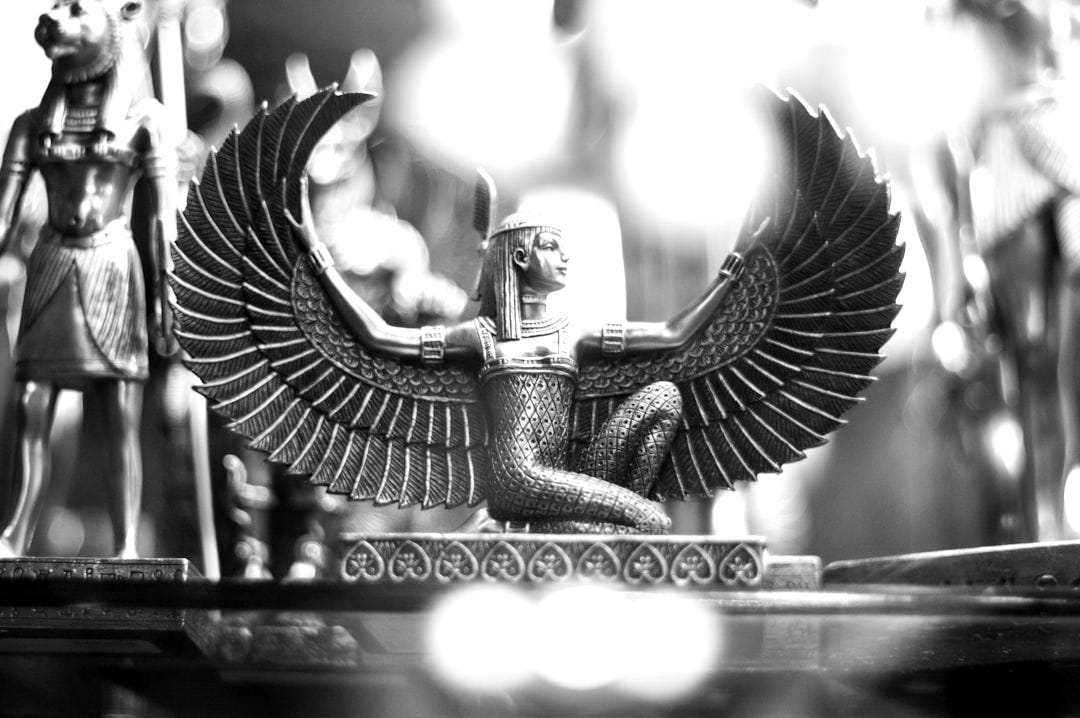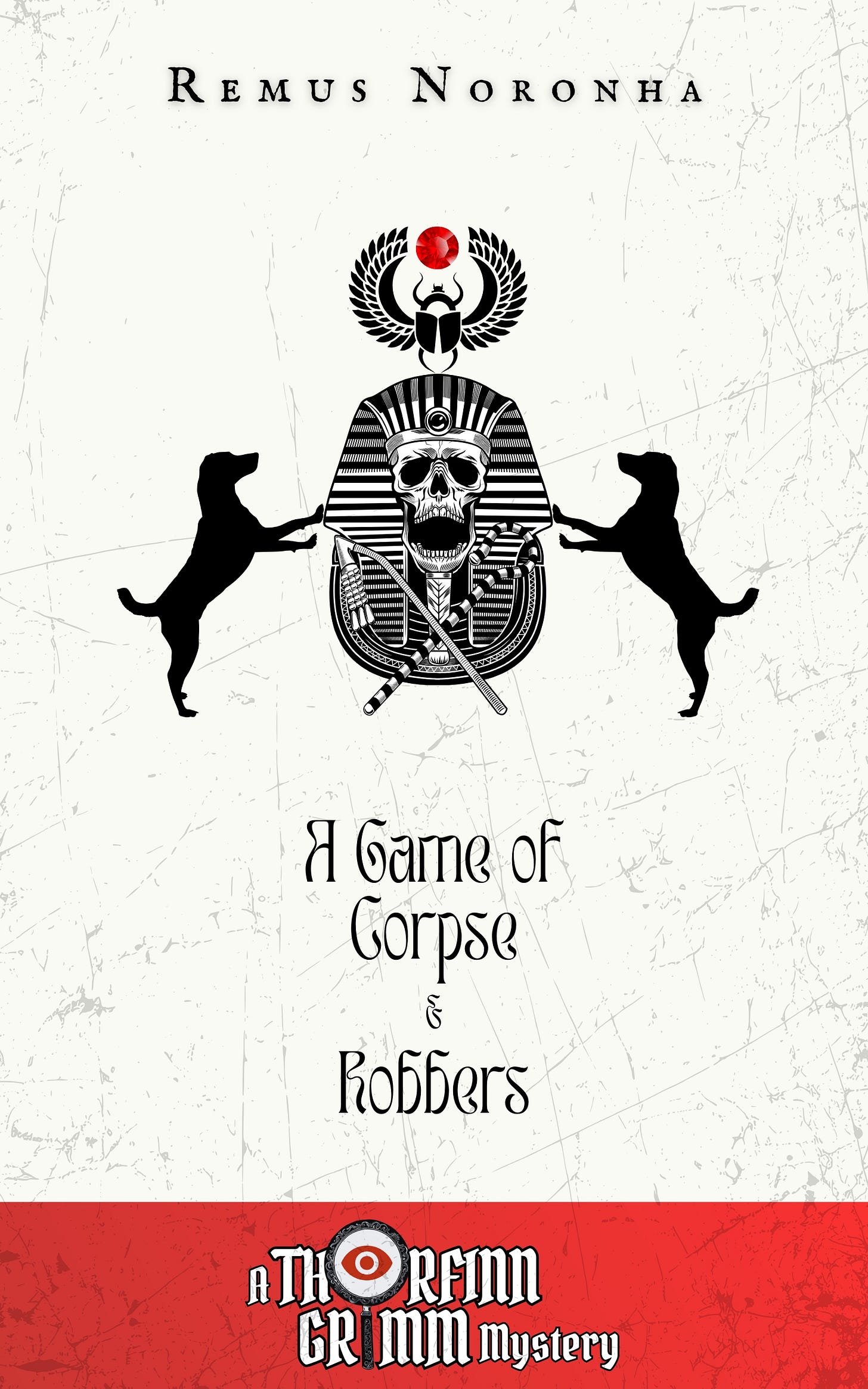'A Game of Corpse and Robbers': Thrifting in The Tombs of Empires, An Introduction
The e-book version of 'A Game of Corpse and Robbers' is available now on Amazon.
Investigative consultant Thorfinn Grimm brilliantly solves the theft of a priceless gem… but receives no credit for his work.
When his estranged sister re-enters his life, Finn finds himself investigating the mysterious death of a man found shot in his bed, the secrets of an aristocratic Egyptology club, and a singular incident involving a dog that did not bark.
And there's a mummy involved at one point. Sort of.
Welcome one and all to A Game of Corpse and Robbers, the first Thorfinn Grimm story I ever wrote and published right here on Substack, now available as an e-book. I’d previously included the story in the annual anthology Thorfinn Grimm: Year One, but this time, it’s got its own dedicated cover, narrative structure, and introduction. You can read that introduction below, and if you’d like to own your own copy (and buy me a coffee in the process), here’s the link:
Thrifting in The Tombs of Empires

There are benefits to colonising the past.
One of the biggest hindrances to a colonialist foreign policy is the existence of other human beings: the indigenous people who live in the territories the prospective empire hopes to control. This isn’t a problem with past worlds and dead civilizations because, well, they’re dead.
Which brings us to mummies. The anointed dead. Corpses of people who lived thousands of years ago, entombed according to the strictures of an all-but-forgotten religion.
The origins of Egyptomania (the Western fascination with Ancient Egypt) are usually traced to the Napoleonic campaigns of the 18th century and the Egyptology boom of the 19th. That does hold true to a certain extent, but there’s something that timeline ignores.
The Ptolemaic dynasty ruled Egypt from 305 BC to 30 BC, making it the last and longest ruling royal house of Ancient Egypt. This dynasty was formed as a direct result of Alexander the Great conquering Egypt, and the dynasty itself was technically Greek, not Egyptian.
But that didn’t stop the Ptolemaics from taking on the titles, powers, and traditions of the ancient pharaohs. This helped the dynasty legitimise their control over the newly colonised territory, and (more relevantly) sparked a wave of interest in ancient Ancient Egypt. They commissioned expeditions and excavations, studied their artefacts, and adopted their iconography. Not that different from Victorian Britain or Napoleonic France. What’s more, they weren’t the first to do this — not even the first in Egypt.
My point is this: just as empires have colonised the world, todays colonise yesterdays. We study dead worlds lost to time, we practice their religions, adopt their iconographies. We legitimise ourselves by taking on their titles, powers, and traditions. We are enthralled by our pasts, for better or worse.
What does this have to do with a detective mystery story? Well, when you think about it, isn’t the detective mystery an archaeological artefact too?
The late 19th century produced the first examples of the modern fictional detective, starting with Edgar Allan Poe’s C. Auguste Dupin. Many others followed, most famously Sherlock Holmes. Almost every fictional detective that has appeared on page or screen since then has been inspired by Holmes in one way or other.
His creator Sir Arthur Conan Doyle (who, coincidentally, wrote the first horror story featuring a dangerous re-animated mummy) would be devastated to hear this, but Holmes and Watson aren’t just characters anymore; they’re artefacts recovered from the fall of the 19th century, studied and appropriated by the writers of the 20th; who then inspired the writers of today; who will no doubt find themselves treated the exact same way by the writers of tomorrow. And the reason we take so freely from the past is because the people and the world it belongs to are long gone, so, it doesn’t really belong to anyone (copyright laws notwithstanding). Therefore, it belongs to everyone.
Just so we’re clear, I don’t think that’s a bad thing. Adopting the culture and fashions of the past is surely a better alternative to taking literal corpses out of their tombs and eating them (yes, that’s real). The imagination cannot and should not be limited by the constraints of time and geography.
The Thorfinn Grimm stories are set in the present day. But, in a very meta sense, they also belong to a version of the 19th century. And the 20th. And the 18th, for that matter. There’s a time and place for realist crime fiction and true mysteries, but for me, writing these stories has been an exercise in minimising time and place, opening the door to “a world of pure imagination”, where there is only the problem and its inevitable solution.
Join me, won’t you?
For more Accursed Adventures, check out:
and


